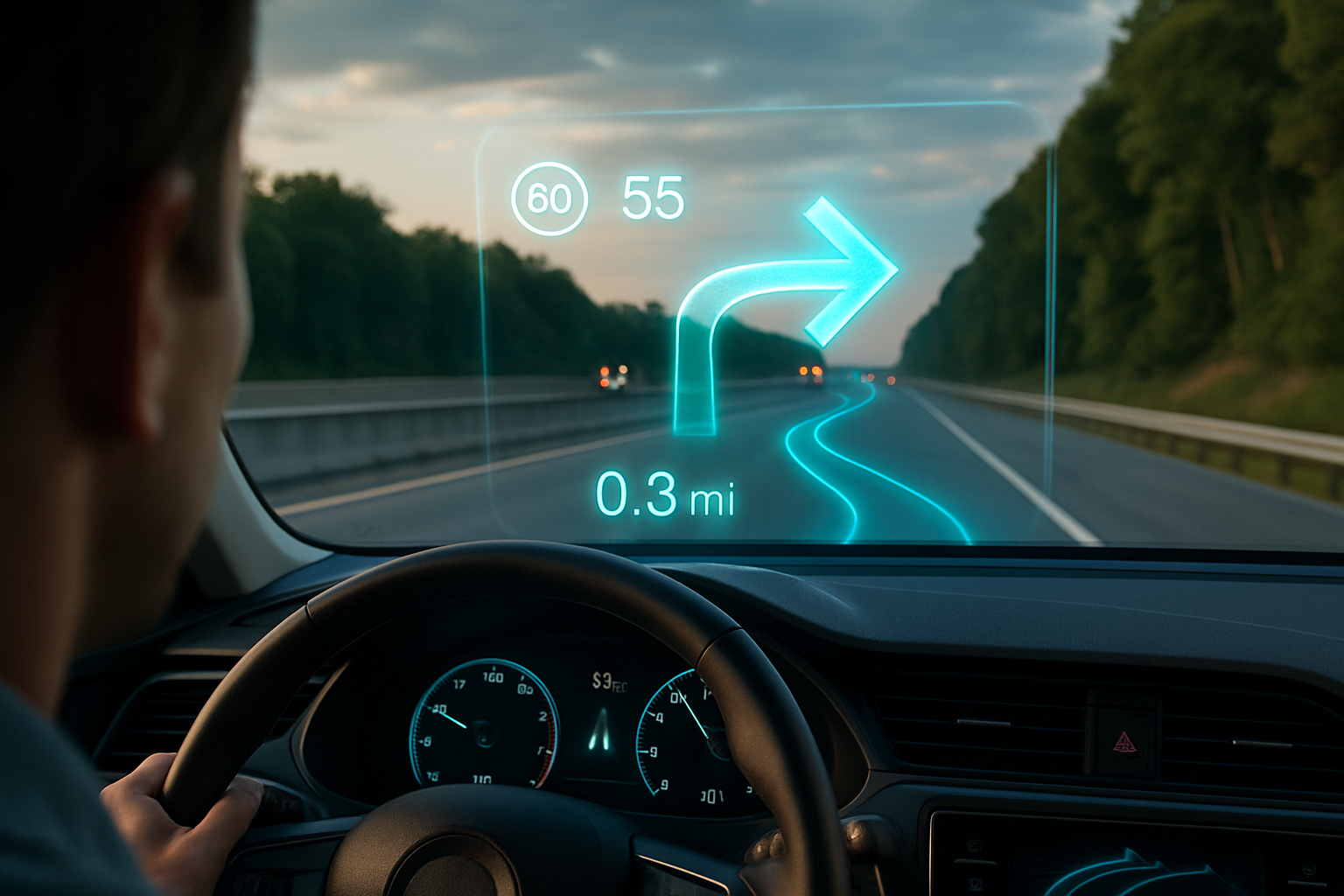Holographic Heads-Up Displays: The Next Frontier in Automotive Interfaces
The future of driving is materializing before our eyes, quite literally. As we stand on the cusp of a new era in automotive technology, holographic heads-up displays (HUDs) are emerging as a groundbreaking innovation poised to revolutionize the way we interact with our vehicles. Imagine a dashboard that extends beyond the confines of physical screens, projecting vital information and controls into the three-dimensional space of your car's interior. This isn't science fiction—it's the next evolution of in-vehicle interfaces, and it's closer to reality than you might think.

As holographic technology advanced, automotive engineers saw an opportunity to expand the capabilities of in-car displays. The convergence of improved projection systems, advanced optics, and sophisticated software laid the groundwork for true holographic HUDs. Unlike their predecessors, these systems can create three-dimensional images that appear to float in space, offering a more immersive and intuitive interface for drivers.
How Holographic HUDs Work
At the heart of holographic HUD technology lies a complex interplay of light manipulation and spatial computing. The system typically consists of a high-resolution projector, a set of specially designed mirrors and lenses, and a transparent holographic optical element (HOE) integrated into the windshield or a separate display surface.
The projector emits carefully calculated light patterns that interact with the HOE to create the illusion of three-dimensional objects floating in space. Advanced eye-tracking systems ensure that the holographic images remain stable and in focus from the driver’s perspective, regardless of head movement or vehicle motion.
The Benefits of Dimensional Data
Holographic HUDs offer several advantages over traditional flat-screen displays. By presenting information in a three-dimensional space, these systems can convey complex data more intuitively. For instance, navigation instructions can be displayed as floating arrows that appear to lead the way along the actual road ahead, reducing the mental effort required to translate 2D map data into real-world directions.
Safety features also benefit from this technology. Collision warnings can be presented as 3D objects that accurately represent the position and distance of potential hazards, allowing drivers to react more quickly and appropriately. The ability to layer information in 3D space also means that more data can be displayed without cluttering the driver’s field of view.
Gesture Control and Haptic Feedback
One of the most exciting aspects of holographic HUDs is their potential to revolutionize how we interact with our vehicles. Gesture recognition technology allows drivers to manipulate holographic controls with hand movements, eliminating the need for physical buttons or touchscreens. This not only creates a more futuristic driving experience but also enhances safety by reducing the time drivers spend looking away from the road.
To provide tactile feedback for these virtual controls, some systems incorporate ultrasonic haptic technology. This creates the sensation of touch in mid-air, allowing drivers to feel holographic buttons and sliders as if they were physical objects. The combination of visual, auditory, and tactile feedback creates a multi-sensory interface that’s both intuitive and engaging.
Challenges and Future Developments
While the potential of holographic HUDs is immense, several challenges must be overcome before widespread adoption becomes feasible. One of the primary hurdles is the cost of the technology, which currently limits its implementation to high-end luxury vehicles. As with many automotive innovations, economies of scale and continued research are expected to bring costs down over time.
Another significant challenge is ensuring that holographic displays work effectively in all lighting conditions. Bright sunlight can wash out projected images, while darkness can create unwanted reflections. Engineers are working on advanced light management systems and adaptive brightness controls to address these issues.
Looking to the future, we can expect holographic HUDs to become increasingly sophisticated. Integration with augmented reality systems could allow for real-time information overlays on the world outside the vehicle. For instance, points of interest could be highlighted as you drive past them, or traffic conditions could be visualized in real-time along your route.
The Road Ahead
As we accelerate towards a future where holographic HUDs become commonplace, it’s clear that this technology has the potential to fundamentally change our relationship with our vehicles. By creating a more intuitive and immersive interface between driver and machine, holographic displays promise to enhance both the safety and enjoyment of driving.
While there are still technical and economic hurdles to overcome, the rapid pace of development in this field suggests that we may see holographic HUDs in mainstream vehicles sooner than we think. As automakers continue to push the boundaries of what’s possible, one thing is certain: the dashboard of the future will be a far cry from the analog gauges and dials of yesterday. The era of holographic interfaces is dawning, and it promises to transform our driving experience in ways we’re only beginning to imagine.





